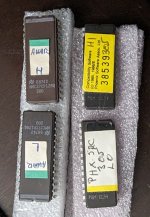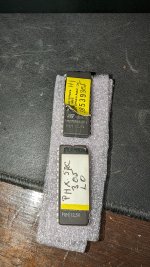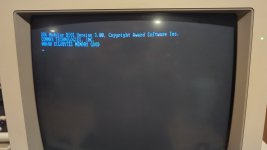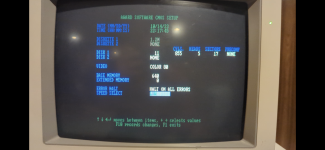cant read all of the chips but two say
NMC27CP128Q
The two "Award" ones. 27128-class (16 KB). What I normally see is two 27256-class (32 KB) for the BIOS.
I do not think that you should assume that both sets are 27128-class, because maybe someone just added the second set(Phoenix) see to see if anything extra popped on the boot screen, and left the second set in, even though they saw nothing.
Should I expect the second pair of ROMs to be BASIC?
Based on the labels on them, I would not.
Surely, "Compatibility Software" is not Phoenix' name for BASIC.
Maybe someone on these forums knows what that Phoenix Compatibility Software is.
So trying to figure out how to install and dump these ROMs.
So, putting them onto an early IBM 5170 motherboard. (Because you do not possess an EPROM programmer.)
Your 5170 motherboard is of type 1 motherboard. That can be configured to support 27128-class ROMs/EPROMs via
shunt block U131. The ROM-socket-to-memory mapping is shown at [
here].
I think this is 'give it a go and see' if the 5170 motherboard (configured for 27128-class ROMs/EPROMs) boots with:
- Award H in socket U47
- Award L in socket U27
- Phoenix H in socket U37
- Phoenix L in socket U17
No certainty.




